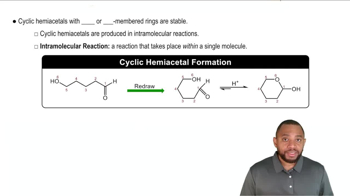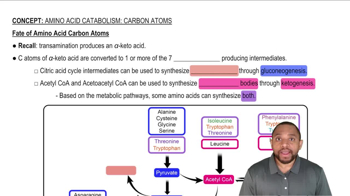Textbook Question
Draw the structure that completes the mutarotation reaction between the two cyclic forms of (a) galactose and (b) fructose.
b.

 Verified step by step guidance
Verified step by step guidance Verified video answer for a similar problem:
Verified video answer for a similar problem:



 2:1m
2:1mMaster Mutarotation Concept 1 with a bite sized video explanation from Jules
Start learning